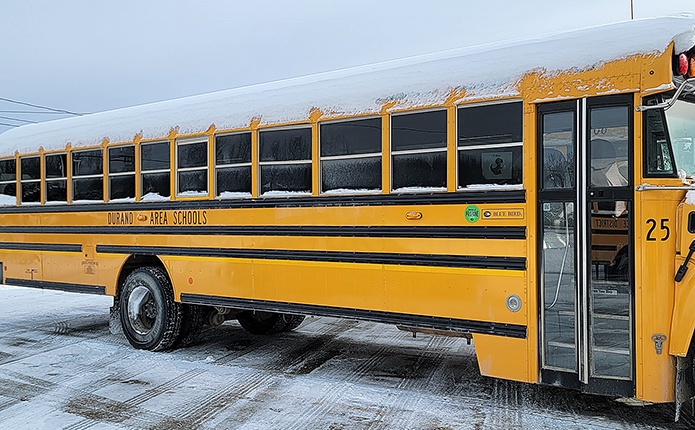
Home to a large railroad depot and an influx of freight trains, blocked roads and bus delays are a common occurrence for Durand Area Schools in Durand, Michigan, often resulting in scheduling lags and concerned calls from parents.
“Buses are held up all the time because these trains are so long that when they come through, they shut down the whole town,” said Transportation Director John Smyth. “If I’m not here to answer the phone, parents start to panic when they can’t immediately locate their child.”
As the transportation director of a small district, Smyth often wears multiple hats acting as director, dispatcher, router, phone answerer and, many times, driver.
With all of this and more on his plate, Smyth decided it was time to update the district’s software.

“We wanted to ensure that the parents and school transportation team had all the up-to-date information about bus location, driver actions, and vehicle,” Smyth said.
As part of the selection process the district required a minimum of three bids before making a final decision on a system provider.
During his search, Smyth found a nearby district that had used Transfinder and had positive things to say about the experience. Smyth notes that, while it wasn’t the cheapest option, Transfinder offered the best value and presentation of the bunch.
“We decided to go with Transfinder because they didn’t just offer routing software, they also offered software that they integrate with tracking software for the buses, and then of course they had Stopfinder and Wayfinder, which again, help us not just track the buses, but the students, and allow the parents to track their children as well.”
A big attraction for the district was the system’s use of geofencing, a virtual geographic boundary that enables software to trigger a response when a device enters or leaves a particular area. The system allows the user to set up multiple geofences, enabling parents to establish a more accurate location and time of arrival.
“That kind of flexibility that they have themselves, it reduces some of the worry for them and it also reduces a lot of pressure on me when I come back to the office, because I don’t have 17 phone calls wondering why the bus was late,” Smyth said.
With the start of school just around the corner, Smyth was eager to accelerate the normally six-month long integration process, working closely with a Transfinder trainer and project manager to compress months-worth of route building and system testing into six weeks.
“When you go from old software that’s equivalent to having an abacus to do your math, into all this new software, it can be a little overwhelming,” Smyth said. “But I can tell you that I never felt like I was alone with these guys. I asked a question, and I got an answer. I needed help and someone got on the phone. The experience for me personally was great.”
While the system is still in the beta testing and data integration stage, Smyth says the district is excited to introduce and educate parents on the new operation, while finally putting their minds at ease.
“As a parent your primary concerns tend to block out some of the other extenuating circumstances that might be in play,” Smyth said. “We’re hoping to eliminate some of that worry.”


